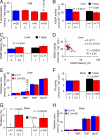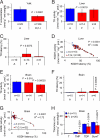Wild birds of declining European species are dying from a thiamine deficiency syndrome
- PMID: 19597145
- PMCID: PMC2715476
- DOI: 10.1073/pnas.0902903106
Wild birds of declining European species are dying from a thiamine deficiency syndrome
Abstract
Wild birds of several species are dying in large numbers from an idiopathic paralytic disease in the Baltic Sea area. Here, we demonstrate strong relationships between this disease, breeding failure, and thiamine (vitamin B(1)) deficiency in eggs, pulli, and full-grown individuals. Thiamine is essential for vertebrates, and its diphosphorylated form functions as a cofactor for several life sustaining enzymes, whereas the triphosphorylated form is necessary for the functioning of neuronal membranes. Paralyzed individuals were remedied by thiamine treatment. Moreover, thiamine deficiency and detrimental effects on thiamine-dependent enzymes were demonstrated in the yolk, liver, and brain. We propose that the mortality and breeding failure are part of a thiamine deficiency syndrome, which may have contributed significantly to declines in many bird populations during the last decades.
Conflict of interest statement
The authors declare no conflict of interest.
Figures




Comment in
-
Proposed link between paralytic syndrome and thiamine deficiency in Swedish gulls not substantiated.Proc Natl Acad Sci U S A. 2010 Jan 26;107(4):E14. doi: 10.1073/pnas.0912119107. Epub 2010 Jan 19. Proc Natl Acad Sci U S A. 2010. PMID: 20133884 Free PMC article. No abstract available.
Similar articles
-
Thiamine deficiency impairs common eider (Somateria mollissima) reproduction in the field.Sci Rep. 2017 Oct 31;7(1):14451. doi: 10.1038/s41598-017-13884-1. Sci Rep. 2017. PMID: 29089512 Free PMC article.
-
Proposed link between paralytic syndrome and thiamine deficiency in Swedish gulls not substantiated.Proc Natl Acad Sci U S A. 2010 Jan 26;107(4):E14. doi: 10.1073/pnas.0912119107. Epub 2010 Jan 19. Proc Natl Acad Sci U S A. 2010. PMID: 20133884 Free PMC article. No abstract available.
-
A review of the factors causing paralysis in wild birds: Implications for the paralytic syndrome observed in the Baltic Sea.Sci Total Environ. 2012 Feb 1;416:32-9. doi: 10.1016/j.scitotenv.2011.12.023. Epub 2012 Jan 5. Sci Total Environ. 2012. PMID: 22226396 Review.
-
Effects of vitamin B1 (thiamine) deficiency in lake trout (Salvelinus namaycush) alevins at hatching stage.Comp Biochem Physiol A Mol Integr Physiol. 2009 Oct;154(2):255-62. doi: 10.1016/j.cbpa.2009.06.020. Epub 2009 Jul 1. Comp Biochem Physiol A Mol Integr Physiol. 2009. PMID: 19576291
-
Nutritional diseases of exotic animals.J Am Vet Med Assoc. 1970 Sep 1;157(5):583-99. J Am Vet Med Assoc. 1970. PMID: 4916225 Review. No abstract available.
Cited by
-
The thiamine content of phytoplankton cells is affected by abiotic stress and growth rate.Microb Ecol. 2013 Apr;65(3):566-77. doi: 10.1007/s00248-012-0156-1. Epub 2012 Dec 22. Microb Ecol. 2013. PMID: 23263236
-
Convergent remodelling of the gut microbiome is associated with host energetic condition over long-distance migration.Funct Ecol. 2023 Nov;37(11):2840-2854. doi: 10.1111/1365-2435.14430. Epub 2023 Sep 27. Funct Ecol. 2023. PMID: 38249446 Free PMC article.
-
A rapid method for assaying thiaminase I activity in diverse biological samples.PLoS One. 2014 Mar 27;9(3):e92688. doi: 10.1371/journal.pone.0092688. eCollection 2014. PLoS One. 2014. PMID: 24675843 Free PMC article.
-
Thiamine deficiency impairs common eider (Somateria mollissima) reproduction in the field.Sci Rep. 2017 Oct 31;7(1):14451. doi: 10.1038/s41598-017-13884-1. Sci Rep. 2017. PMID: 29089512 Free PMC article.
-
Limited effects of macro-nutrient ratios on thiamin content and transfer in phytoplankton and copepods.J Plankton Res. 2023 Feb 1;45(2):360-371. doi: 10.1093/plankt/fbad004. eCollection 2023 Mar-Apr. J Plankton Res. 2023. PMID: 37012974 Free PMC article.
References
-
- Roos G. Falsterbo bird station: August 1981–June 1982. Anser. 1982;21:169–174.
-
- Karlsson L, Ehnbom S, Walinder G. A comparison between ringing totals at Falsterbo, SW Sweden, ringing totals at Ottenby, SE Sweden, and point counts from the Swedish breeding bird census during 20 years (1980–1999) Ornis Svec. 2005;15:183–205.
-
- Thomas JA, et al. Comparative losses of British butterflies, birds, and plants and the global extinction crisis. Science. 2004;303:1879–1881. - PubMed
Publication types
MeSH terms
LinkOut - more resources
Full Text Sources

